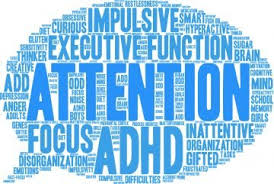Introduction
The neurodevelopmental disorder known as Attention Deficit Hyperactivity Disorder (ADHD) is typified by impulsivity, hyperactivity, and inattention. Over time, there has been a substantial evolution in the management of ADHD, especially with regard to drug alternatives. An overview of the history of ADHD medicine is given in this article, covering everything from its early discoveries to the state of available treatments now.
Early Treatments and Understanding
The early 20th century saw the first recognition of children’s hyperactivity and inattentional symptoms, which is when the history of ADHD treatment began. However, the exploration of pharmaceutical therapies for the treatment of symptoms resembling ADHD did not begin until the middle of the 20th century.
Stimulant Medications:
Benzedrine, an amphetamine derivative, was the first stimulant drug prescribed to treat symptoms of ADHD in the 1930s. It was first recommended to treat a number of ailments, such as depression and narcolepsy, but its stimulant properties quickly led to its use in the treatment of impulsivity and hyperactivity.
Barbiturates and Sedatives:
During the 1950s and 60s, children’s hyperactivity and agitation were occasionally treated with barbiturates and sedatives. Nevertheless, it was discovered that these drugs had serious adverse effects and dependence concerns, which caused their use as ADHD treatments to decrease.
Emergence of Stimulant Medications
Stimulant drugs became the mainstay of pharmacological treatment for ADHD in the 1960s and 1970s. For those with ADHD, these drugs have shown promise in lowering hyperactivity, enhancing focus, and controlling impulsivity.
Methylphenidate, also known as Ritalin, was first created in the 1940s but became well-known as an ADHD treatment in the 1960s. Because of its stimulant qualities and comparatively low side effect profile when compared to amphetamines, it was adopted as the first-line treatment for ADHD.
Amphetamines (Adderall):
In the 1990s, amphetamine-based drugs like Adderall became popular for treating ADHD. Similar in action to methylphenidate, Adderall is a mixture of amphetamine salts, albeit it may have a distinct side effect profile and duration of action.
Improvements in ADHD Drugs
Recent developments in neurobiology and pharmacology have prompted the creation of novel ADHD medication compositions and delivery methods as well as the investigation of non-stimulant substitutes.
Extended-Release Formulations:
In contrast to immediate-release formulations, extended-release stimulant drugs, such as Concerta (extended-release methylphenidate) and Vyvanse (extended-release lisdexamfetamine), offer a longer duration of action and a smoother start and offset of effects.
Non-Stimulant Medications:
Non-stimulant drugs, like guanfacine (Intuniv) and atomoxetine (Strattera), have become popular alternatives for treating patients who don’t react well to or can’t handle stimulant drugs. Compared to stimulants, these drugs may function through distinct modes of action and target distinct neurotransmitter systems.
Novel Delivery Systems:
Chewable tablets, liquid formulations, and transdermal patches are some of the novel delivery methods for ADHD medication that have been developed in addition to the conventional oral formulations. For those with ADHD, these alternate administration options provide ease, flexibility, and possibly even better adherence.
Current Trends and Future Directions
With continuous research aimed at maximising treatment outcomes, reducing side effects, and resolving individual variability in treatment response, the field of ADHD medicine is still developing.
Personalised medicine is gaining popularity as a means of treating ADHD since it allows for the customisation of pharmaceutical regimens to meet the unique requirements and features of each patient. To help with treatment selection and dosage, this may entail genetic tests, neuroimaging studies, and other individualised evaluations.
Combination therapies, which combine medication with behavioural interventions, counselling, or educational support, are being investigated by certain researchers for their potential benefits in treating ADHD. Combination medicines may have synergistic benefits and enhance outcomes for ADHD patients by treating several components of the illness.
Extended-Duration Formulations: In order to minimise the need for several daily dosages and offer prolonged symptom control throughout the day, long-acting formulations of ADHD medicine are still being developed. For those with ADHD, these formulations may increase treatment efficacy overall, convenience, and adherence.
Non-Pharmacological therapies: Behavioural therapy, parent education, and classroom modifications are examples of non-pharmacological therapies that are vital to the overall management of ADHD in addition to medication. Future studies might concentrate on combining pharmaceutical and non-pharmacological methods to improve outcomes for ADHD sufferers.
Conclusion
The development of ADHD medications over the past century has been influenced by developments in neurobiology, pharmacology, and our knowledge of the illness. The foundation of treatment for people with ADHD is now ADHD medication, which has evolved from the early usage of stimulant drugs to the creation of extended-release formulations and non-stimulant alternatives.
The future of ADHD medicine holds promise for individualised, efficient, and comprehensive approaches to treatment as research continues to understand the underlying mechanisms of ADHD and identify individual variances in response to therapy. We can keep enhancing the quality of life and outcomes for people with ADHD by combining pharmacological and non-pharmacological interventions, attending to the various needs of those affected by the disorder, and encouraging cooperation between educators, families, researchers, and healthcare professionals.

